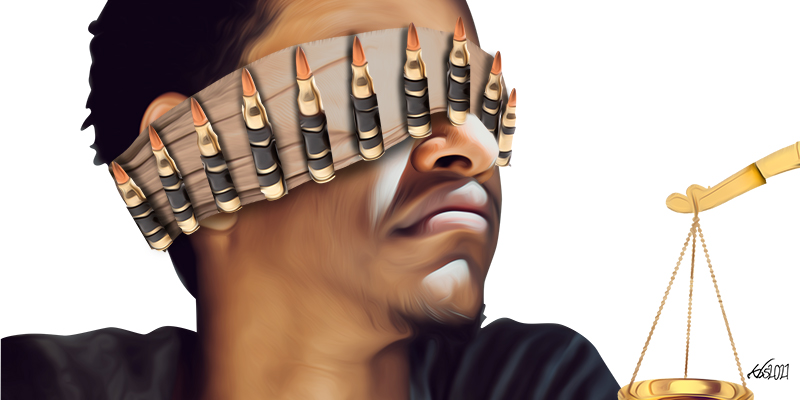The war in the northern Ethiopian region of Tigray that began officially in November 2020 masks more than it reveals. The natural and necessary tendency of most commentators has been to focus on the very tragic atrocities being inflicted on the civilian population.
However, it is a story that effectively begins in 1991, with the American-instigated sabotage by then leader Meles Zenawi, of the transition from the high centralisation of the Mengistu government he was replacing, to something more democratic and representative of the actual make-up of the country.
Up until 1991, Ethiopia was what it always had been: an empire fighting to hold itself tighter together. The clue was in the title of the head of state: “Emperor”, from Menelik II (1889-1913) who expanded northern Abyssinia southwards, to Haile Selassie (1930-1974), who sought to consolidate it there.
Even after 1974, when Emperor Selassie was deposed by Col. Mengistu Haile Mariam, the empire state—now stripped of its pomp—and the elevated place of its Orthodox Christian religion, remained culturally Amharic and governed strictly from the centre.
That was supposed to have changed after 12 May 1991, when an assortment of armed groups, fighting in the names of the various nationalities that had been conquered during the formation of the empire, drove out Mengistu’s war-battered government.
Instead, in stepped the new Tigray People’s Liberation Front regime, headed by Meles Zenawi, and wrapped in a package of other political formations collectively called the Ethiopian People’s Revolutionary Democratic Front (EPRDF).
It is the dynamics of replacing the leadership of this Front, following the death of Meles Zenawi in August 2012, which birthed this new phase of the eternal crisis of the Ethiopian empire state. In choosing Abiy Ahmed, the leadership of the Front set themselves on a collision course with the TPLF element of the regime who took every subsequent change, firing or redeployment of their well-embedded cadres in the state machinery as marginalisation and victimisation.
They may not have been entirely wrong. However, as is often said, to a person in a position of privilege, equality often feels like oppression.
Where TPLF was right, was in opposing now Prime Minister Abiy’s gambit to systematically do away with even what little federation and regional autonomy there had been under Meles. They saw themselves as the potential principal victims of Abiy’s move to dissolve the EPDRF and replace it with his Prosperity Party (PP), replete with the language of empire, nostalgia, and notions of centralism.
The rest were details. Prime Minister Abiy, now as PP, intended to postpone the elections scheduled for late 2020 that were supposed to have marked the end of the interim period of the post-Meles regime. TPLF, now reduced to its home region, insisted that Abiy had no mandate to do that and went ahead to organise the elections for Tigray alone. Abiy declared this illegal. TPLF claimed election victory for Tigray. Abiy sought to re-impose Addis authority over the region by sending in his own hand-picked Tigrayan administration and to take control of the very large Ethiopian federal military garrison that the Meles administration had “wisely” previously relocated to the Tigrayan capital city of Mekelle. Fighting then broke out, as TPLF resisted this.
So far, the forces fighting on the side of Tigray have prevailed, albeit in a very qualified way.
First, they avoided annihilation, given the much larger resources available to the Ethiopian state as a whole, versus an army drawn from a population making up less than 7 per cent of the total Ethiopian population. This was achieved by the TPLF decision to abandon an initial plan to defend their urban spaces conventionally, and withdraw to the less physically accessible parts of the region, and then undertake widespread mobilisation.
Second, they then managed to disable, immobilise and take prisoner large numbers of soldiers—including their commanders—from the Ethiopian state army. This enabled them to re-take the places they had previously abandoned, including their capital.
So far, the forces fighting on the side of Tigray have prevailed, albeit in a very qualified way.
By these means, they bought themselves vital breathing space, but the destruction and loss of human life, as well as injury to ordinary bystanders has been colossal. What is more, neighbours with issues, such as Eritrea still, and the Republic of Sudan, have taken advantage of the conflict to physically reclaim areas of Ethiopia they believe are theirs.
The question nevertheless remains, where does everyone involved go from here?
The obvious is being done. The Tigrayan forces are seeking to take advantage of their recent success to consolidate their position. They seek to re-take territories that they lost in the initial Ethiopian/Eritrean onslaught, as well as build military pacts with groups opposed to not just the Ethiopian regime, but also the regime’s military allies like the government of Eritrea to the north. This means more fighting.
Thirdly, they perhaps see a value in taking the fight outside Tigray, if only to ease the pressure on their own people. This may point to a conviction that their situation will not end until Ethiopia, either as a whole, or in the form of the current government, ceases to exist. This could mean a lot more fighting.
Despite the setback—to put it mildly—of having lost a significant portion of soldiers, equipment and territory from this initial encounter, the Addis Ababa government of Prime Minister Abiy Ahmed is also not giving up. Addis Ababa remains defiant. They insist that history is on their side, and that going to war in Tigray was a justified “law and order” policing operation.
The government has resorted to forced recruitment of youth from the southern regions and the countryside to augment the already very enthusiastic militia mobilisation in the Amhara region from which Prime Minister Abiy draws perhaps the bulk of his political support, primarily for his willingness to abandon the multinational-federalist constitution of 1995 in favour of re-centralisation, a matter very dear within Amhara nationalism and shared with the urban elite who serve the state. This means more fighting. Their first move seems to be to revive another Mengistu-era tactic of denying relief aid to the region to force it to submit.
As for the politics, the elected but then displaced regional government of Tigray now seeks to invoke the current constitution of the country in a bid to begin laying out a political argument to the rest of the country and the wider world. This may turn out to be the more difficult part as the TPLF, Tigray’s historical political leadership—the overwhelmingly dominant factor in the current resistance—itself has more questions to answer to the rest of the Ethiopian population, especially on the very points (human rights, democracy, national/ethnic identity) that may be the only arguments that can serve it now.
The reality is that the 27 years of TPLF rule over all of Ethiopia that ended in 2012, was simply a bad experience. The bitter truth is that not many people in Ethiopia who are not Tigrayans have reasons to like the TPLF. And the Tigrayan people as a whole are the victims of this.
It began with deception, and then deceptions within that deception, then a lot of gaslighting, and ended with outright betrayal.
The war against the previous regime of Col. Mengistu Haile Mariam had been exceptionally vicious. Mengistu, despite having displaced the monarchy, had been determined to hold together and further homogenise the Ethiopian state. He had not even been prepared to listen to arguments from Eritrean nationalists, despite that region having been forcefully brought into the empire by the very monarch he had deposed.
Against this were the various nationalities of Ethiopia who had been scheduled to be homogenised into a single Amharic-speaking “Ethiopian” identity. With rebellions stewing from as far back as the 1960s, constant war became a permanent feature of the Mengistu period.
This is why the 1991 victory against Mengistu was of enormous political significance. It was not just the end of a dictatorship, but also potentially the end of the empire state, and the politics that created it.
For the first time, a person not claiming to be Amhara was in charge of government. It was, in effect, Independence Day for the conquered nations of the south, and also for Eritrea.
What happened instead was that the Meles Zenawi faction of the TPLF leadership got into an American-backed conspiracy to prevent a loosening or even possible breakup of what the Americans consider to be a Christian-based anchor state surrounded by Muslim-dominated countries and communities.
It began with deception, and then deceptions within that deception, then a lot of gaslighting, and ended with outright betrayal.
Through the usual diplomatic-politico-military manoeuvrings that accompany such transitions (think South Africa’s Boer-ANC 1991 dealings), the West enabled Meles to end up with the largest armed group in the rebellion, in order to control the TPLF and to diplomatically outmanoeuvre the other authentic fighting groups by replacing them with concocted “PDOs” (People’s Democratic Organizations) of his own making, which in turn enabled TPLF to control the EPDRF.
Federation was offered with one hand, then taken away with the other. The soldiers of the other fighting groups were encamped waiting to be integrated into a new national Ethiopian “federal” army, whereupon many were then massacred by TPLF cadres. At one point, the TPLF regime even resorted to confiscating farm implements from southern farmers, out of fear that they might launch a peasant revolt in protest at these measures.
New, essentially TPLF-invented, political parties sprung up claiming to also represent the oppressed nationalities, and were promptly integrated into the new Front to substitute the original ones.
Most critically, TPLF cut a deal with the rebel Eritrea People’s Liberation Front to grant Eritrea independence in return for the Eritreans dropping their historical support to all the groups that had been fighting Mengistu with them.
It was a comprehensive betrayal.
I suspect that those political voices coming from outside Tigray that have condemned the war and the atrocities committed against the Tigrayan population have probably done so out of high principle (and through gritted teeth). Despite having been victims of TPLF abuses while it was in power, they are politically and culturally obliged to stick to their own principles and condemn the Abiy regime for doing to the Tigrayan population what the TPLF did to them while in power.
In early June the Ethiopian government declared a ceasefire (to encourage “deep reflection” apparently), and claimed to have voluntarily removed its troops from the Tigrayan capital. The Tigrayan forces demanded a restoration of communications (telephone, internet, etc.), an investigation into human rights violations, and negotiations based on the key tenets of the 1995 constitution. This last point would mean respect for federation based on nationality, respect for demarcated regional boundaries, and freedom of speech and assembly. But the moment to seriously consider such a negotiated ceasefire has now passed.
Federation was offered with one hand, then taken away with the other.
The irony here is that none of those things were guaranteed nor respected while the Meles-faction-within-TPLF-within-EPDRF-make-up-of-made-up-parties was in power.
On top of the bad behaviour described above, the TPLF regime was well known for shooting demonstrators with live bullets, suppressing gatherings, turning off the telephone and internet networks during periods of unrest, abducting regime opponents, rigging elections and territorial boundary-setting processes and generally trampling constitutional provisions at will. But since it was also a darling of the United States Department of State, none of any of that mattered (except to the victims).
The real story here is therefore—and tragically—not the atrocities, waste and attendant damage to the Ethiopian peoples and state as a whole as a result of this conflict. This is because there has probably not been a moment in the entire history of this empire state since its formation, where it has not been in conflict with either a neighbour, or its own population, or both. If Death-from-war were a country, it would probably be called Ethiopia.
The real story is about the consequences of the Meles Zenawi-TPLF fall from power, and the resultant mess in which he has left his people. And the real story behind that is the tragedy of how Meles passed up an opportunity to allow the great people of this country to finally take a different direction, and opted instead to become a cynical, opportunistic, American-pleasing Machiavelli.
This is unwittingly confirmed by the formerly retired General Tsadkan Gebretensae, who came out of retirement at 68 years to help provide leadership to the Tigrayan forces, and is credited as the mastermind behind their remarkable change in fortune. In an early June interview, he explained, “When this started, it was very clear that the most senior, the most highly experienced commanders are from Tigray, which has been the backbone of the Ethiopian armed forces for the last thirty years.”
Gebretensae made this statement without any sense of irony, or at least a recognition that others may find it odd that persons from one of the much smaller regions of the country (comprising 6 or 7 per cent of the population, or about seven million people, as noted earlier) would somehow have managed to remain the military “backbone” of a country comprising over 110 million people, and with other nationalities numbering more than twenty and even forty million.
Even if one were willing to buy the story promoted since 1991 that the TPLF had done the bulk of the fighting against the Mengistu regime, the question still remains as to why, in the three decades they were in power, they were unable to then reorganise the Ethiopian national armed forces to better reflect the demographics of the country.
The moment to seriously consider such a negotiated ceasefire has now passed.
In fact, even this period of war still reflects the essentially self-serving and self-absorbed culture of the Tigrayan political leadership. The fact is that in being invaded and persecuted by the Abiy regime, Tigrayans are actually being made victims of all the repressive state machinery, and disregard for laws and constitutionalism that the TPLF either created or took advantage of while in power.
However, the TPLF now seeks to exploit and become the first beneficiaries of the movement and culture of democracy and respect for human rights that actually came into being, championed by oppressed Oromo youth, because of TPLF’s own excesses while in power.
This is so, to the extent that even when making their political arguments today—and receiving support even from some of their previous victims—few, if any, in the TPLF leadership running the Tigray side of the war, have publicly and genuinely acknowledged the suffering, loss and hurt their 1991 betrayal and all that followed caused others, let alone made any apology for it. This is essentially narcissistic.
As mentioned earlier, not many Ethiopians have any love for the TPLF for reasons such as these, and many others. Theirs was a self-serving, oppressive, discriminatory and arrogant regime.
The real challenge, therefore, will lay in constructing a national dialogue in which all the current and historical grievances of all the peoples that are, or once were, Ethiopians, are finally aired, atoned for and corrected.








